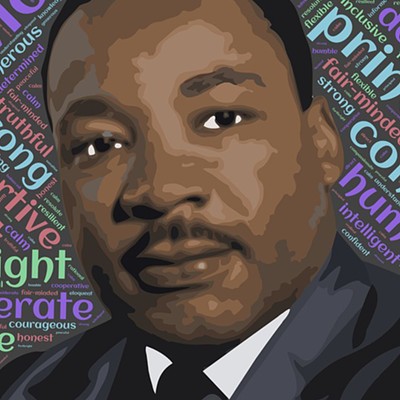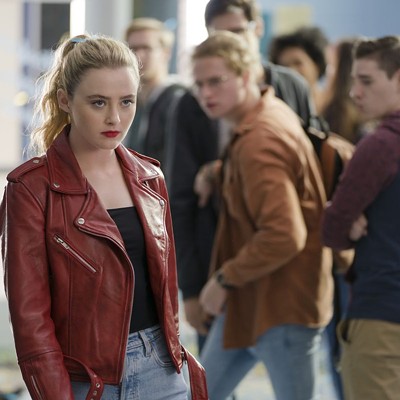TINKER TAILOR SOLDIER SPY
***
Many viewers might find it easier to wade through quicksand while sporting cement blocks on their feet than understanding just what the heck is going on during the opening half-hour of Tinker Tailor Soldier Spy. Author John le Carre's 1974 novel required a seven-part miniseries that ran over five hours when it premiered on the BBC back in 1979, yet here's Swedish director Tomas Alfredson (making his English-language debut on the heels of his international success with the vampire yarn Let the Right One In) and scripters Bridget O'Connor and Peter Straughan attempting to compress all this intel into a shade over two hours.
For the most part, they succeed. The early stretch of this chilly Cold War drama will indeed be tough going for moviegoers acclimated to the comparative simplicity of the Bourne trilogy (to say nothing of the 007 oeuvre), but those willing to pay attention will be rewarded with a film of unexpected intricacy and various small pleasures -- indeed, it's often reminiscent of the sort of spy flick that was made during the picture's early-1970s setting.
Tackling the role that Alec Guinness owned in the miniseries, Gary Oldman is quietly effective as George Smiley, a key member of the British Secret Intelligence Service (aka MI6, aka "the Circus"). So taciturn that he's likely to be mistaken for a character in the silent film The Artist, Smiley initially remains on the sidelines as the SIS head, known only as Control (John Hurt), deduces that one of the organization's top men is actually a mole working for the Russians. But a sabotaged mission leads to the mandatory retirement of both Smiley and Control, and it's only after the latter passes away that Smiley is brought back to ferret out the leak.
The central material concerning the four suspects (played by Colin Firth, Ciaran Hinds, Toby Jones and David Dencik) actually proves to be the least compelling part of the picture, and the unmasking of the traitor is more apt to elicit shrugs than gasps. What makes the movie cling to our senses are the soulful transgressions of other key characters: the maverick agent (a wired Tom Hardy) who falls in love at the wrong time; the assistant (Benedict Cumberbatch) whose personal life proves to be as dependent on secrets as his professional one; the bureau's discarded expert on Russia (Kathy Burke), wistfully drawing on nostalgia-tinged memories; and the field agent (Mark Strong) quietly shattered by betrayal.
As far as le Carre screen adaptations go, I much prefer 1965's The Spy Who Came In from the Cold and 2005's The Constant Gardener, although it probably should be noted that the author himself considers this the best filmization of one of his works. Conversely, Bret Easton Ellis Tweeted about the awfulness of this movie. Le Carre vs. Ellis -- considering that's the mental and literary equivalent of a brawl between Godzilla and Jar Jar Binks, I'd say it's safe for discerning viewers to give this a shot.
THE ARTIST
***1/2
The definitive look at the transition from silent films to talkies arrived courtesy of the 1952 musical Singin' in the Rain. The story about a talented nobody becoming an overnight success while an established performer simultaneously suffers a career crash'n'burn has been filmed ad nauseam, most recognizably in the various screen incarnations of A Star Is Born.
And, unless one counts Charlie Chaplin's gibberish song in 1936's Modern Times, the employment of sound in an otherwise silent picture found its high-water mark in Mel Brooks' Silent Movie, in which the only word heard throughout the course of the film ("Non!") is uttered by legendary mime Marcel Marceau.
In short, The Artist isn't exactly the most original movie to make its way into modern-day theaters, despite its angle of being a black-and-white silent picture. But so what? Although it sometimes runs short on invention, it makes up for it in style, execution and a cheery disposition that's positively infectious.
Jean Dujardin, best known on these shores (if at all) for the pair of OSS 117 spy spoofs he made with director Michael Hazanavicius in their French homeland, plays silent screen star George Valentin, whose chance encounter with a young fan named Peppy Miller (Berenice Bejo) contributes to her eventual rise in the industry. The pair clearly harbor feelings for each other, but George finds himself trapped in a loveless marriage (Penelope Ann Miller sympathetically plays his estranged spouse) and relies on his dog Uggie and his faithful chauffeur Clifton (James Cromwell) for companionship.
The matrimonial strife soon takes a back seat to a dark development, revealed when studio head Al Zimmer (John Goodman) informs him about the inevitable advent of sound in motion pictures -- a revolution that George myopically dismisses as a short-lived fad. Instead, this cinematic breakthrough all but destroys his livelihood.
In crafting his homage to the silent era, Hazanavicius crucially fails to include one of its key ingredients, that go-for-broke dynamism that informed much of the cinema of the time -- think, for example, of that house really falling on top of Buster Keaton, or Harold Lloyd's eye-popping stunts in Safety Last! and other gems, or just about anything served up by Chaplin.
Nothing in The Artist can quite showcase that sort of edgy genius, although a sequence that has wicked fun with sound effects is worth singling out. Yet while it may not match up with the best of the silents, The Artist matches up nicely with the best of 2011. Dujardin and Bejo are both enchanting and irresistible, and Hazanavicius' screenplay has no trouble shifting between mirth and melodrama.
As for its visual appeal, the black-and-white images are as crisp and dynamic as anything on view in the year's color explosions, whether it's the luminescent paint jobs in Cars 2 or that vibrant rainbow connection in The Muppets.

























